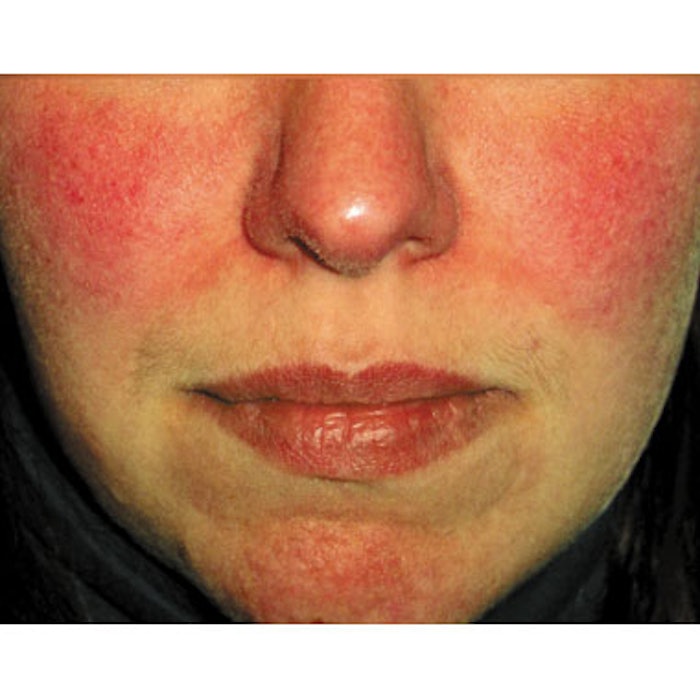
New research published online on April 20, 2017 in the Journal of the American Academy of Dermatology revealed that increased consumption of alcohol, particularly white wine and liquor, is associated with a higher risk of rosacea in women.
To examine rosacea’s connection to alcohol use in women, the authors—led by Wen-Qing Li, an assistant professor of dermatology at Brown University—reviewed data collected from 82,737 women over 14 years (1991-2005) via the Nurses’ Health Study II. There were 4,945 cases on rosacea.
They found that patients who drank alcohol had an elevated risk of developing rosacea, and that risk increased as their alcohol consumption increased. In examining the risk associated with specific types of alcohol, the researchers found that white wine and liquor were significantly associated with a higher rosacea risk.
Although more research is necessary to determine why alcohol consumption may increase the risk of rosacea, the authors believe that alcohol’s weakening of the immune system and widening of the blood vessels could contribute to the redness and flushing that occur when one develops the condition. The authors say further research is also needed to shed more light on the connections between specific types of alcohol and rosacea.
“Drinking alcohol has a number of effects on your body that can impact your skin,” says board-certified dermatologist and study author Abrar A. Qureshi, MD, MPH, FAAD, chair of the department of dermatology at Brown University in Providence, Rhode Island. “While alcohol has been linked to a variety of skin disorders, including psoriasis and acne, our research suggests that it’s also associated with the development of rosacea.”
While red wine has been identified as a rosacea trigger for those who already have the disease, this study suggests it is not significantly associated with developing rosacea in the first place. The authors note that white wine and liquor contain high concentrations of alcohol without the flavonoids and other anti-inflammatory substances found in red wine. Despite its anti-inflammatory properties, however, red wine also contains other substances, like histamine and resveratrol, that may contribute to flushing in patients who already have rosacea, the study says.
“Our research contributes to the sizable body of evidence that demonstrates alcohol’s harmful effects on the body, including the skin,” Dr. Qureshi says. “Science has identified many factors that may potentially cause rosacea, and our study indicates that alcohol may be one of them.”
Image courtesy of the National Rosacea Society











